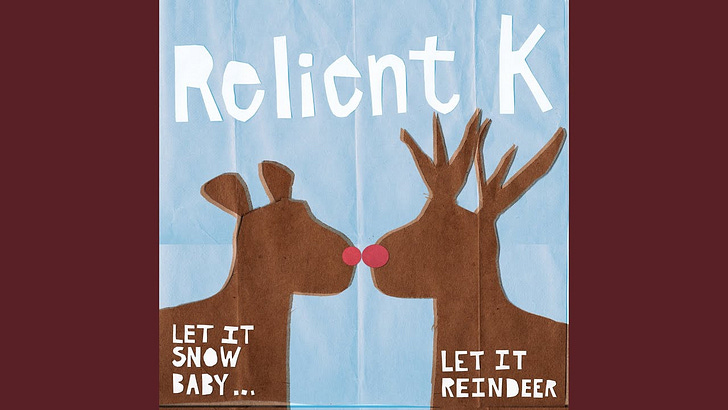Completing the Past to Welcome the New Year
"Made it through the year and I did not even collapse," sings Relient K, encapsulating the sentiment many of us feel as the year ends.
The transition from one year to the next invites reflection, review, and preparation. However, this process is often muddled by evaluation—a practice that can be judgmental and limiting—instead of true review. By focusing on review, we can complete the past and create a cleaner slate for the new year.
The Role of Reflection in Transition
End-of-year periods, marked by celebrations such as Christmas, New Year, or even personal milestones, are inherently reflective. Many people feel the need to evaluate themselves, comparing accomplishments against their expectations. However, evaluations often reduce complex experiences into simplistic judgments—good or bad, successful or failed. Research suggests that self-critical evaluations can impede personal growth and well-being, leading to burnout or diminished motivation (Smith & Lazarus, 2022).
Instead, meaningful reflection allows us to acknowledge and process the events of the past year. During the Christian tradition of Advent, for instance, individuals are encouraged to prepare spiritually for something new. This preparation involves questions of readiness and the shedding of unnecessary burdens—a practice not unlike completing the past. Regardless of one’s spiritual beliefs, this process can be universally valuable.
Why New Year’s Resolutions Fail
Each year, millions of people set New Year’s resolutions, hoping for transformation. Yet, research indicates that up to 80% of resolutions fail by February (Norcross & Vangarelli, 1989). This high failure rate is often attributed to a lack of preparation and unrealistic expectations. Many resolutions unconsciously aim to address unresolved issues from the past, such as lingering grief, unmet aspirations, or unprocessed emotions. Without a thorough review of these underlying issues, resolutions are likely to falter.
Insights from the Forbes Health/OnePoll surveys underscore these challenges. In 2023, 45% of respondents identified mental health improvement as a top priority, with this figure rising to 50% among individuals aged 18 to 25 (Forbes Health, 2023). In 2024, resolutions shifted slightly, with 48% prioritizing fitness, 38.2% finances, and 36% mental health (Forbes Health, 2024a). Despite these intentions, only 8% of individuals maintained their resolutions for a full year, with most lasting just 3.74 months (Forbes Health, 2024b). These findings highlight the importance of reflection and realistic goal-setting as prerequisites for sustained change.
The Symbolism of Chaff
The Biblical image of chaff—the inedible husk surrounding wheat kernels—offers a useful metaphor for reflection. During a harvest, chaff is separated and discarded, leaving only the valuable grain.
Photo by Johannes Plenio on Unsplash
Similarly, a year-end review can help identify and release the "chaff" in our lives: the unnecessary burdens, unresolved emotions, and outdated habits that weigh us down. This process isn’t about judgment but purification, enabling us to move forward unencumbered.
The Distinction Between Review and Evaluation
Evaluation, as commonly understood, involves assigning value through metrics like grades, scores, or other symbolic measures. While evaluation has its place, it often overshadows review, which is more nuanced and constructive. For example, when grading students, the written feedback (review) often proves more valuable than the letter grade (evaluation). Reviews provide specific insights, highlight strengths, and identify areas for improvement, fostering growth (Black & Wiliam, 1998).
Self-review, similarly, requires honesty and often benefits from external perspectives. Inviting others to provide feedback can uncover blind spots and offer richer insights. This collaborative approach is particularly relevant in professional settings, where reviews can strengthen team dynamics and guide personal development.
A Few Steps for an Effective Year-End Review
To complete the past and prepare for the future, consider these four steps:
Acknowledge the Wins: Begin by celebrating your accomplishments, no matter how small. Recognizing successes builds confidence and motivation for future endeavors. Don’t evaluate the win. A win is a win!
Identify the Unfinished: Reflect on unresolved issues, lingering tasks, or unmet goals. Ask yourself: What do I need to address or let go of to move forward?
Seek Feedback: Engage trusted colleagues, friends, or mentors to gain external perspectives. Their insights can illuminate areas you might overlook. Life is not meant to be a solo project
Set Intentions, Not Resolutions: Instead of rigid goals, set flexible intentions rooted in your values and informed by your review. Intentions focus on growth and adaptability rather than perfection.
Do Stop, Even if You Stop: Periodic lack of consistency doesn’t mean the whole thing is over. A resolution is a resolve, “solve”, a solution to something. If the issues is not solved, then pick yourself up and try it again, learn, revise, and try again.
Moving Into the New Year
A thorough review transforms the past from a source of regret into a foundation for growth. By completing the past, we create space for new opportunities, habits, and directions. This process, while demanding, is ultimately liberating, enabling us to greet the new year with clarity and purpose.
Works Cited
Black, P., & Wiliam, D. (1998). Assessment and classroom learning. Assessment in Education: Principles, Policy & Practice, 5(1), 7-74. https://doi.org/10.1080/0969595980050102
Forbes Health. (2023). Top New Year’s resolutions for 2023. Forbes. https://www.forbes.com/health/mind/new-years-resolutions-survey-2023/
Forbes Health. (2024a). Top New Year’s resolutions for 2024. Forbes. https://www.forbes.com/health/mind/new-year-resolutions-survey-2024/
Forbes Health. (2024b). New Year’s resolutions statistics 2024. Forbes. https://www.forbes.com/health/mind/new-years-resolutions-statistics/
Norcross, J. C., & Vangarelli, D. J. (1989). The resolution solution: Longitudinal examination of New Year’s change attempts. Journal of Substance Abuse, 1(2), 127-134. https://doi.org/10.1016/S0899-3289(89)80004-4
Smith, C. A., & Lazarus, R. S. (2022). Emotion and adaptation. In The Handbook of Emotion Regulation (pp. 21-44). Guilford Press.




